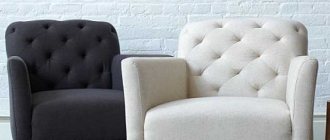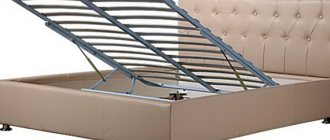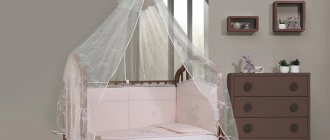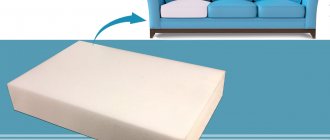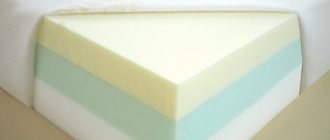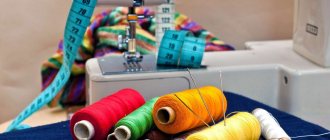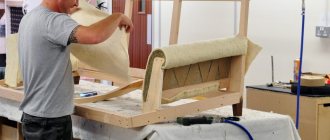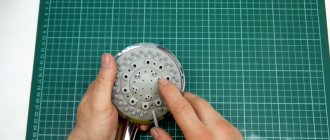0
9426
The modern furniture industry uses many types of raw materials of both natural and artificial origin as fillers for sofas. But most often polyurethane foam is used, which is better known to a wide range of consumers as foam rubber. This material has been popular since time immemorial; over the years of its existence it has undergone significant changes and has been improved as much as possible. Sometimes manufacturers combine foam rubber for a sofa with other analogues - padding polyester, latex, felt, but more often they use combinations of one filler of varying degrees of density. What are the advantages and disadvantages of polyurethane foam, how do they affect the functional features of furniture, should be understood by every user who is in search of the ideal sofa.
Qualitative characteristics of polyurethane foam
The main mechanical properties of polyurethane foam include the following characteristics:
- foam density;
- rigidity;
- elasticity;
- breathability;
- tensile strength;
- cell size;
- possibility of extension;
- support coefficient.
Cell size and support coefficient are considered on highly elastic specimens.
Not only the quality of the material depends on the given characteristics, but also how durable and comfortable the furniture will be, as well as the breathability of the product.
Foam rubber quality parameters. Density
Furniture foam rubber is evaluated primarily by its density. The service life depends on this parameter. The higher the density, the longer it can be used without compromising its quality characteristics.
This fact is explained by the fact that furniture foam rubber is subjected to heavy loads, and the brand with the highest density better withstands dynamic and static weighting. To understand the mechanism of action, it is necessary to imagine the amount of polyurethane foam per unit volume. It is clear that in a place where there is more of it, dents and abrasions will not appear so quickly.
Do not confuse the density of foam rubber with an indicator of its hardness. These concepts are interrelated, but are not identical. There are brands of polyurethane foam with low density and high rigidity.
Scope of application
Polyurethane foam is quite common and is used in various areas of production:
- furniture;
- construction (sound and heat insulation);
- sports (mats, punching bags);
- medical (orthopedic products);
- sewing soft toys and clothes.
Foam rubber differs depending on the purpose in quality and price category. Durability, density, hardness and elasticity depend on the composition.
Advantages of polyurethane foam
The material is very popular in various fields of production due to its significant advantages. Thus, it has high wear resistance. In addition, it is completely hypoallergenic, therefore absolutely safe for the production of not only furniture, but also children's goods and orthopedic products.
Foam rubber is moisture resistant, so it is not susceptible to the formation of harmful microorganisms. At the same time, it fully retains its quality characteristics over a fairly wide temperature range (from -40 to 100 degrees).
Due to its good acoustic insulation, foam rubber is successfully used as an insulating material. And its elasticity allows it to be used in creating products of any size and shape.
Despite its advantages, polyurethane foam can withstand a fairly long period of active use. Depending on its density and purpose - from 5 to 15 years.
Description and composition of foam rubber
Foam rubber is a soft material that is part of the group of gas-filled plastics and is made of polyurethane foam, which is 90% air. To make it, synthetic components are mixed. They interact with each other, foam, then harden.
The resulting material has a fine-cell structure, retains its shape well, is not subject to deformation, is easily restored after compression, is resistant to stains, durable and hypoallergenic.
In the 80s, polyurethane foam was supplied by a Norwegian company called “Porolon”. The proper name has become a common noun. PPU is the material itself, and foam rubber is the name of the company that produced it, but no one remembers this difference for a long time.
Main properties of polyurethane foam:
- elasticity;
- breathability;
- insulating abilities.
The material acts as a substitute for feathers and down in mattresses, scraps of fabric in pillows, blankets, toys, and foam in packaging.
Depending on the composition and types of production process, such properties of foam rubber as density, elasticity, elasticity, strength may change. The industry produces dozens of types of polyurethane foam, which differ in characteristics:
- Densities. Measured in kg per m3. The elasticity, softness and service life of the material depend on it.
- Rigidity. It is measured in kPa (kilopascals). Determines the amount of force required to compress a material by 40%.
- Fortresses. Shows the tensile strength of this brand of polyurethane foam. The higher the strength, the stronger the material.
- Elasticity. High values indicate that the brand of foam rubber has greater softness.
- Residual deformation. To determine the foam, it is compressed to 50% of its original size, moistened, and heated. Then the impact is stopped and it is determined how much the parameters of the original material and that which was subjected to deformation have changed.
- Convenience. Calculated from 2 coefficients. “Support” is how evenly the load is distributed over the entire surface, and “comfort” is the softness of the material.
Polyurethane foam is produced in various sizes and shapes. More often you can find sheet foam rubber with a thickness of 5 mm to 1 m. Block and roll types are less commonly used.
Foam rubber brands
In furniture production, various polyurethane foam is used, which is divided into certain brands.
Brand ST. It is considered a standard material from which other types are measured. It is mainly used for stuffing armrests or chair seats.
High-hardness grade EL. This is a modified standard material with greater rigidity. This density of foam rubber is most suitable for a sofa because it can withstand static and dynamic loads. In addition, this brand is used in the production of hard mattresses.
Highly elastic grade (HR). The most comfortable material that combines elastic properties and a fairly low initial rigidity. Thanks to this property, the material is used in the manufacture of high-quality furniture and for filling seats. Thus, it is the HR brand that is the ideal density of foam rubber for chairs and orthopedic mattresses.
Choices
In the production of foam rubber, the main emphasis is on thickness and density. It depends on these indicators what needs it can serve.
Thus, high-density foam rubber is used in the manufacture of sofa seats, because softness is good, but at the same time a person will simply fall through. Dense material is also important in the production of mattresses, because a hard and even surface for sleeping is preferable for many.
At the same time, the sofa does not consist of one seating area. It is necessary to equip armrests, frame, side walls, etc. They also need soft furnishings; depending on their purpose, they select a brand of foam rubber.
For seats, choose elastic and hard foam rubber. At the same time, the thickness of the foam rubber is not important, because comfort and convenience are not provided by one layer. To achieve the best effect, use several sheets of material. At the same time, various brands of foam rubber are used to produce any type of furniture.
Material selection
The bulk of the material on sale is low-density foam rubber up to 25 kg/m3; as furniture it is used mainly in children's furniture or in the backs of upholstered furniture together with denser brands.
So, when filling the seat of upholstered furniture, it is better to use material with a density higher than 30 kg/m3 (grades 3040, 3540, 3036), for the headrest you can choose a material with a lower density, and for children's furniture use soft brands up to 25 kg/m3 (2520, 2220, 1820, 1620) in combination with grades 2736, 3036.
Buy furniture foam rubber
Top
Special purpose foam
If foam rubber (density 40) is often used in the production of furniture, then less dense foam is used in many other areas. Thus, for sanitary and hygienic needs (kitchen and bath sponges) a material is required that will not crumble, will foam well and withstand frequent contact with water. For this purpose, special additives are used that improve quality characteristics and at the same time do not cause allergies.
There are viscoelastic grades that have found their application in the production of medical products. Widely used in the manufacture of pads used for burns. The material conforms to the contours of the body and is less traumatic to the affected area.
Contour products, such as rollers, cylinders, drawers, are made from block polyurethane foam. It is completely homogeneous and quite elastic.
Step-by-step instructions for reupholstering
Before you reupholster the sofa with your own hands, it is disassembled into its component parts. The armrests are removed first, then the backrest is unscrewed and the seat is disconnected last.
Next, remove the old upholstery and foam rubber (if it will be replaced). There is no need to throw away the fabric; it will serve as a template for cutting new material. All grooves will have to be ripped out.
The reupholstering process depends on the design of the furniture. Corner sofas require more time and material due to the fact that their size exceeds the standard one, but the basic principles of operation remain the same.
Armrests
There are two shapes of armrests - rectangular and curved.
In the case of rectangular ones, everything is simple:
- New covers are cut out and sewn together, similar to those removed from the product.
- The worn-out layer of foam rubber is removed and a new one is applied. It is important to do this in such a way that the wooden frame is isolated from contact with the fabric, otherwise the material will wear out very quickly at the points of contact.
- To form beautiful and soft corners, cut out a piece of foam rubber, the size of which allows you to completely cover the armrest not only from the side, but also from the sides.
- Having retreated about 1 cm from the wood, cuts are made on the foam rubber, which seem to continue the line of the frame, and this small rectangle is removed.
- Spray foam rubber and wood with glue, then wrap the edges.
Apply glue to the sections and press them along their entire length to each other so that a beautiful rounded corner is obtained.
- If desired, lay a layer of padding polyester on top of the foam rubber. It also needs to be put on glue.
- New covers are put on, securing them with staples at the bottom of the frame. This completes the work.
If the armrests are bent, you will have to spend a lot of time on their restoration:
- First, a special comma-shaped profile is stuffed with staples along the front part. Its wide part should lie on the edge of the wood.
- After this, the armrest is covered with foam rubber. Its edge is laid so that it extends beyond the profile by about 2 cm.
- The left indent along the cut is covered with glue and folded over, connecting to the profile.
Expert opinion
Smirnova Ekaterina Anatolevna
7 years of experience in interior design, professional architect
A round edge is placed close to the profile, and a strip of the same profile is pressed against it and secured with staples. The edging is needed only to reserve a space of a certain width, so it is then removed.
To lay the profile evenly where the armrest is rounded, teeth are cut out on its flat part.
A comma-shaped part is cut out of foam rubber 2 cm thick, the size of which corresponds to the inside of the decor. It is fixed in the middle with glue, and the side sections are folded inward to form a kind of roller.
To make the decor more prominent, another layer of foam rubber is glued on top, cutting it not edge to edge with the previous one, but leaving about 5 mm of allowance.
The sections are coated with glue and folded onto the profile to create a round edge. This operation is performed in the same way as in point 3. As a result, the result will be an armrest like this.
Next we start upholstery. The armrest is covered with fabric and secured with staples on both sides. It is important to stretch the material well so that it does not sag when the foam shrinks with constant use of the sofa.
A foam roller is covered with a cloth on the side and also secured with staples. The excess is cut off with a blade, making an indent of no less than half a centimeter.
After this, cover the inner decorative part with fabric and fix it using staples using a similar principle. It will be more convenient to cut off all excess with scissors.
They begin gluing in a round edging, previously covered with fabric (usually the same color as the upholstery, but you can choose a different shade if you wish). Before starting work, the remaining fabric is cut off, stepping back from the stitching a few millimeters.
Use a glue gun to smear small areas between the decorative elements and place the edging there, pressing it for 5-10 seconds. You need to make sure that there is not too much glue, otherwise it will stain the front part of the product.
Upon completion of the work, the ends of the edging are cut along the seam, the fabric is folded up, and the excess plastic is cut off, after which the material is folded down and secured with two or three staples.
Now all that remains is to cover the outer side part with foam rubber and cover it with fabric. The armrest is completely ready.
seat
The method of reupholstering the seats largely depends on the type of mechanism on which the sofa is assembled. If it is folding, you should strictly repeat all the shapes and sizes originally specified by the manufacturer. This is especially important for old book sofas, where even a slight increase in the thickness of the foam layer makes it possible to use it only when unfolded.
In most cases, the sequence of actions is as follows:
- First, remove all the old filler.
- If the sofa is made without a spring block, you can immediately begin laying a new soft layer. Otherwise, you will have to check the integrity of all springs and, if possible, repair or replace damaged elements.
- To prevent the springs from cutting the foam rubber, they need to be covered with a new piece of fabric - burlap or tarpaulin. On the sides, the material is sewn directly to the springs or nailed with staples to the wooden body of the sofa.
- Foam rubber is placed on the fabric. To prevent it from moving during operation, it is glued or fixed with staples. The first option is simpler and more reliable.
- A padding polyester is laid on top of the foam rubber, also attached with glue. You can do without this additional layer, but then the seat will wear out faster.
- Using an old cover as a pattern, the upholstery fabric is cut and sewn.
- Pull a new one on and secure it with staples at the bottom of the sofa.
Back
In book sofas and similar ones, reupholstering the backrest occurs in the same way as replacing the filling and upholstery on the seats.
If the backrest is made using a decor such as a carriage screed, a beginner in the furniture business should not carry out its restoration on their own. It is better to seek help from a professional, otherwise there is a risk of ruining the fabric and other expensive materials.
A regular rectangular back is processed like this:
- Remove the old foam and glue the new one. Overlapping the corners and sides is carried out according to the same principle as described in paragraph No. 2 of the “Armrests” subsection.
- Sew a new cover and pull it over the product, securing it from below.
- If the sofa is equipped with pillows that are part of the backrest, they should also be upholstered with new fabric. If the condition of the padding is unsatisfactory, it is completely replaced with foam rubber, cut into 2x2 cm cubes.
Replacing the upholstery of a sofa with your own hands at home is quite possible even for those who have never encountered furniture repair before. As the first “experimental”, you should choose an old ottoman that you wouldn’t mind taking to the dacha or giving to someone, and when you have gained at least minimal experience, you can take on more complex work.
Key points in caring for foam products
To preserve the consumer properties of polyurethane foam and extend its service life, it is worth applying a few simple rules:
- remove dust with a vacuum cleaner, without using mechanical means;
- do not use cleaning products that contain alcohol, which destroys the fibers of the material;
- Do not expose to too high temperatures, in particular do not iron.
These simple rules will maintain the density of the foam rubber at the proper quality, and accordingly, the product will not deform.
Foam rubber for mattress
Furniture foam rubber is used in the production of bed berths. What density is needed for a mattress depends on the expected hardness of the product.
The standard grade of polyurethane foam is used for the manufacture of children's mattresses. Its density is 25 kg/m3.
For luxury beds and longer service life, latex foam rubber is used, which is marked HR and VE.
The EL brand of increased rigidity can withstand loads of up to 100 kg. The EL2240 type is a budget option that is suitable for infrequent use or for a service life of up to 5 years.
The EL2842 brand is considered more durable and resilient, which will last more than 10 years without deteriorating in quality characteristics.
How to choose the right foam rubber
Density and other properties are selected individually. This depends primarily on the operating conditions of the furniture. Before selecting the density, you should answer the following basic questions:
Checklist for choosing foam rubber:
- How many people in a family are 2-3 or 5-7?
- How often will they sit on the sofa - every day or once a week?
- The approximate weight of the heaviest family man – up to 80 kg, 80-100 kg or over 100 kg?
- Are there small children aged 3 to 7 years in the house?
- Are you purchasing foam rubber for a mattress, sofa or chair?
- Are there cats and dogs in the house?
After answering the questions, it will become clear which foam rubber is better to choose. For heavy people, you need to take a hard or highly elastic option. For families with children, choose elastic latex material. If there are pets in the house, they can ruin the upholstery and contents of the sofa, so do not make serious investments.
Sheets with a thickness of 3-10 cm are suitable for purchase. If you plan to use one type of foam rubber, then its thickness should be 7-10 cm. If a combination of sheets was chosen, then the thickness of each should be 3-4 cm. When purchasing, it is important to check all the necessary certificates from the seller, which clearly indicates the composition of the material and whether it can be used for furniture.
When purchasing foam rubber, immediately check with the seller for all the necessary information on the material.
There are types of foam rubber that are not intended for home furniture.
You also need to check its properties - how it recovers after compression. If it takes a long time to return to shape, it is a very cheap type that will quickly become unusable.
With the right selection, you can significantly save on foam rubber and at the same time make a comfortable and convenient sofa or mattress that will last quite a long time.
Possible harm of foam mattresses
Recently, the opinion has spread that foam rubber is harmful to health because the material emits harmful fumes. Despite the use of polyurethane foam for several decades, debate about the advisability of its use does not subside.
It is known that foam rubber is made from completely synthetic components. As a result, substances with a characteristic odor are released. But they quickly disappear and do not cause harm to the body.
However, brands produced in violation of technology and the most budget ones often continue to emit an odor throughout their entire service life. The vapors are compared to the substance released during combustion. But their concentration is so low that there is no need to talk about harm to humans.
Replacing foam rubber in a sofa
Another criterion that you should not underestimate when choosing a location is the type of infill. Filling determines not only the seating comfort, but also the life of the set. The cheapest seats have a molyte filling that will soon be sieved, and sockets will not only ruin the appearance of the seat, but also make it comfortable. The best fillings are made from various foams, using polyurethane foams or very elastic cold foams. Their choice depends on your requirements for softness. Some people prefer a soft sofa on which the body is buried.
Replacing furniture foam in a sofa or chair
will require a much more serious approach. If you do not have experience in repairing upholstered furniture, then due to the large amount of painstaking work involved in reupholstering sofas and armchairs, we advise you to contact furniture repair professionals. Today there are many companies on the market that are ready to replace foam rubber or complete upholstery repairs both at your home and on their territory.
Textile or leather, that's what works here
In this case, choose a softer foam.
Those looking for more challenging sessions can opt for firmer foams, similar to mattresses with varying firmness. Many will also decide on the cover material, which is essential for both maintenance and comfort. Although there are many materials available, the main choice will be leather or textile. Offers a luxurious look, but at the same time has lower breathability, which can be a little unpleasant in the summer. The price range for leather seats is huge, as well as the differences in quality. In general, leather is easier to maintain because wiping away dirt with a damp cloth is usually sufficient. In addition, special impregnation is required twice a year.
You can entrust the choice of furniture fabric and foam rubber to professionals or purchase all the materials yourself in specialized stores to suit your taste, taking into account the requirements for furniture materials.
Our company's consultants will help you calculate, select and purchase the right material for repairing any upholstered furniture.
Textile covers offer a wide variety of materials. This refers to the choice of a simple rule. The lower the proportion of natural fibers, the longer the service life. If you have small children, you will certainly appreciate materials whose fibers are treated to withstand water or even stings, and which are so easy to clean.

